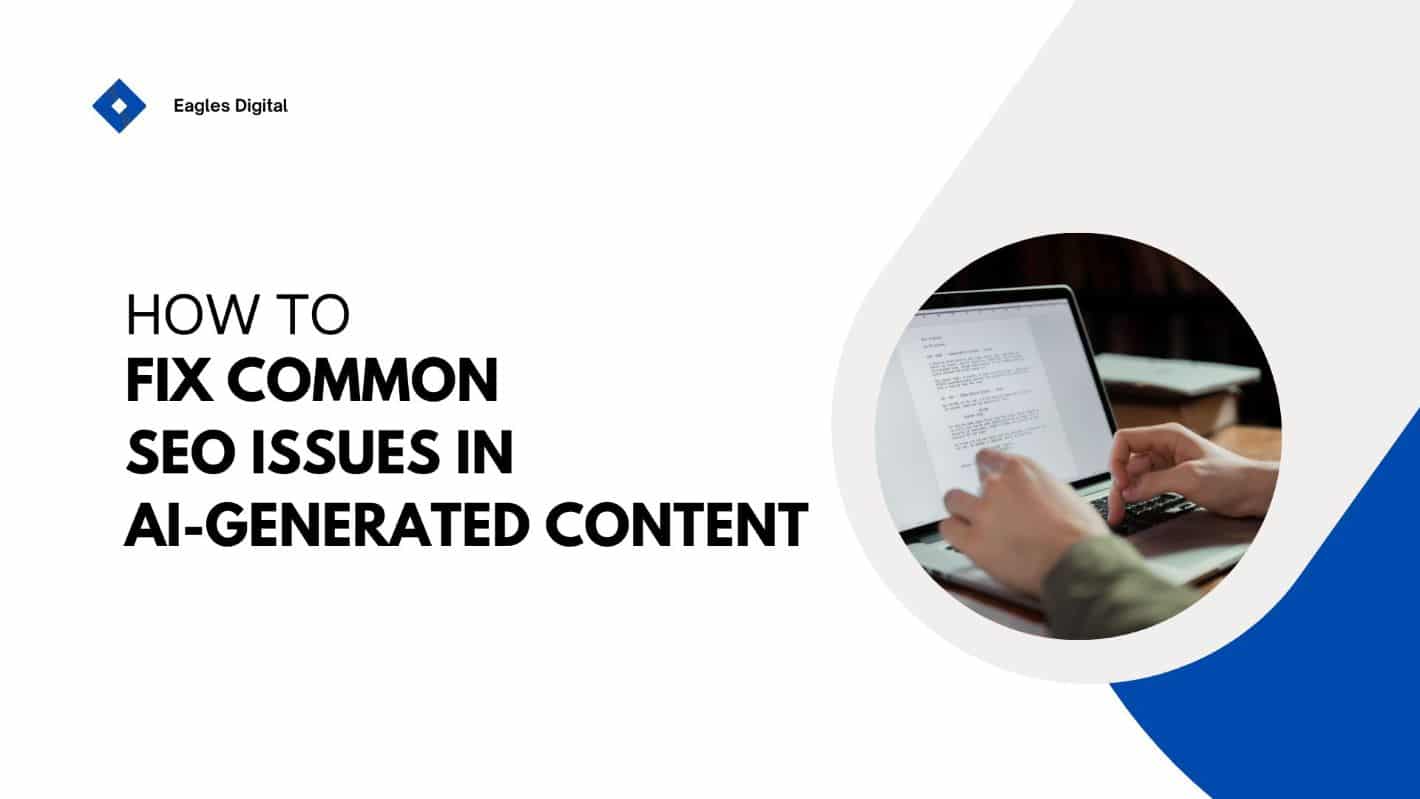How to Fix Common SEO Issues in AI-Generated Content

Dealing with common SEO issues in AI-generated content can feel overwhelming, especially when your content struggles to rank or faces penalties.
These problems often arise from misused keywords, lack of originality, or poor readability, which can significantly hinder your site’s performance.
After spending countless hours fixing AI content issues across multiple websites, I’ve developed a systematic approach to identify and resolve the most common SEO problems affecting AI content.
This guide combines my real-world experience with proven optimization techniques.
Why Fixing SEO in AI-Generated Content Matters
Optimizing SEO in AI-generated content is essential to ensure it ranks well and drives traffic. While AI produces content quickly, it often lacks critical SEO elements needed for visibility.
By fixing issues like keyword usage and readability, AI content can match human-written articles, attract organic traffic, and sustain strong rankings.
Skipping these optimizations means missing out on potential traffic and revenue.
Step-by-Step Guide to Fix SEO Issues in AI-Generated Content
The biggest challenge with AI-generated content isn’t what most people think. It’s not about getting flagged as “AI content” – it’s about the subtle ways AI writing can hurt your SEO without you even realizing it.
I discovered this after watching several of my AI-written articles slowly slide down in rankings despite having solid keywords and backlinks.
The truth is, that AI often writes content that sounds great but misses key SEO elements needed to rank well.
Let’s explore these issues and how you can fix them step by step.
Topic Dilution: The Silent SEO Killer
One of the most insidious problems I’ve encountered with AI content is topic dilution. AI tends to go off-topic or cover too many related subjects at once. This weakens your content’s topical authority and confuses search engines about your page’s main focus.
To fix this, I’ve developed a three-step process:
- Focus on Key Keywords: Choose one main keyword and 3–4 related ones. For example, for “hydroponic gardening tips,” use supporting terms like “nutrient solution” or “indoor systems.”
- Create an Outline: Plan your content structure to keep the AI on track.
- Map Keywords: Ensure each section focuses on your main and related keywords naturally.
Not Meeting User Expectations
One big mistake I made early on was letting AI create content without checking if it matched what people actually searched for. Google is great at understanding user needs, but AI often misses the mark.
Here’s how I fixed it:
- Analyze Top Content: Look at the best-ranking pages for your keyword. Check how they structure their content and what questions they answer. For example, if you’re targeting “best coffee makers” notice whether top-ranking pages focus on reviews, comparisons, or buying guides.
- Restructure AI Content: Adjust your content to match the style of high-ranking pages. If they’re guides, make yours one too, but add extra helpful info.
- Boost Intent Match: Add elements like comparison tables, price info, or step-by-step instructions based on what users want.
This process ensures your AI content fits what searchers—and Google—expect.
The Duplicate Content Trap
AI tools often create content that’s too similar to other pages, leading to SEO problems. I realized this when two of my AI-generated articles started competing in search rankings.
Here’s my process for fixing and preventing duplicate content issues:
- Use tools like Copyscape to check for plagiarism and Screaming Frog to spot similar content on your site.
- If you find duplicates, don’t just tweak them. Rewrite the content with a fresh focus. For instance, split “home office setup” into topics like ergonomics and productivity tools.
Duplicate content is a common concern with AI-generated text. If you’re worried about plagiarism issues, check out our comprehensive guide on How to Avoid Plagiarism When Using AI Writing Tools for detailed prevention strategies.
Missing Featured Snippet Optimization
Featured snippets can give your content a major boost, but many AI users aren’t taking advantage of them. AI may produce content that’s grammatically correct but doesn’t naturally format information for featured snippets.
Here’s how I optimize AI content for featured snippets:
- Identify “snippet-worthy” sections in your content. These are usually definitions, step-by-step processes, or concise answers to common questions.
- Reformat these sections using clear HTML markup. For definitions, use a paragraph tag right after the question. For processes, use ordered lists with clear steps.
- Keep snippet-targeted content between 40-50 words, as this is the sweet spot for featured snippets.
Enhance Thin Content
AI-generated content often covers the right topics but doesn’t go deep enough. Here’s how to add meaningful depth to AI content:
1. Identify Gaps: Pinpoint areas that make claims without proof or introduce concepts without further detail.
2. Add Real Value: For each incomplete section, include:
- Real-world examples or case studies.
- Specific data or statistics.
- Expert insights or credible research.
- Practical guides or step-by-step tutorials.
Bonus Troubleshooting Tips
Hopefully, the above steps will resolve the SEO issues in your AI-generated content.
However, if none of the steps above work, then you can try these additional tips to help you refine your content and improve its rankings:
1. Ensure Content Relevance
- Answer the main query thoroughly, leaving no gaps.
- Add unique perspectives or data to stand out from competitors.
- Support all claims with credible sources, examples, or statistics.
2. Enhance User Experience
- Make content scannable with headings, bullet points, and short paragraphs.
- Highlight key takeaways to improve engagement.
- Use clean, visually appealing formatting for better readability.
3. Review Technical SEO Elements
- Maintain natural keyword density (0.5–2%) to avoid over-optimization.
- Add optimized images with alt text for accessibility and SEO.
- Confirm mobile responsiveness for better user interaction.
Conclusion
AI tools are powerful allies in creating SEO friendly content, but they can’t replace the strategic thinking and creativity of human oversight. Addressing common SEO problems like relevance, originality, and readability helps your content ranks well and resonates with your audience.
While leveraging AI for efficiency, it’s your expertise and personal touch that brings depth and connection to your content.
Finding the right balance between AI optimization and human insight is the key to creating impactful, search-friendly content that consistently performs.
For WordPress users dealing with SEO optimization, our review of the 7 Best AI Writing Tools for WordPress provides platform-specific solutions that integrate seamlessly with your content workflow.


